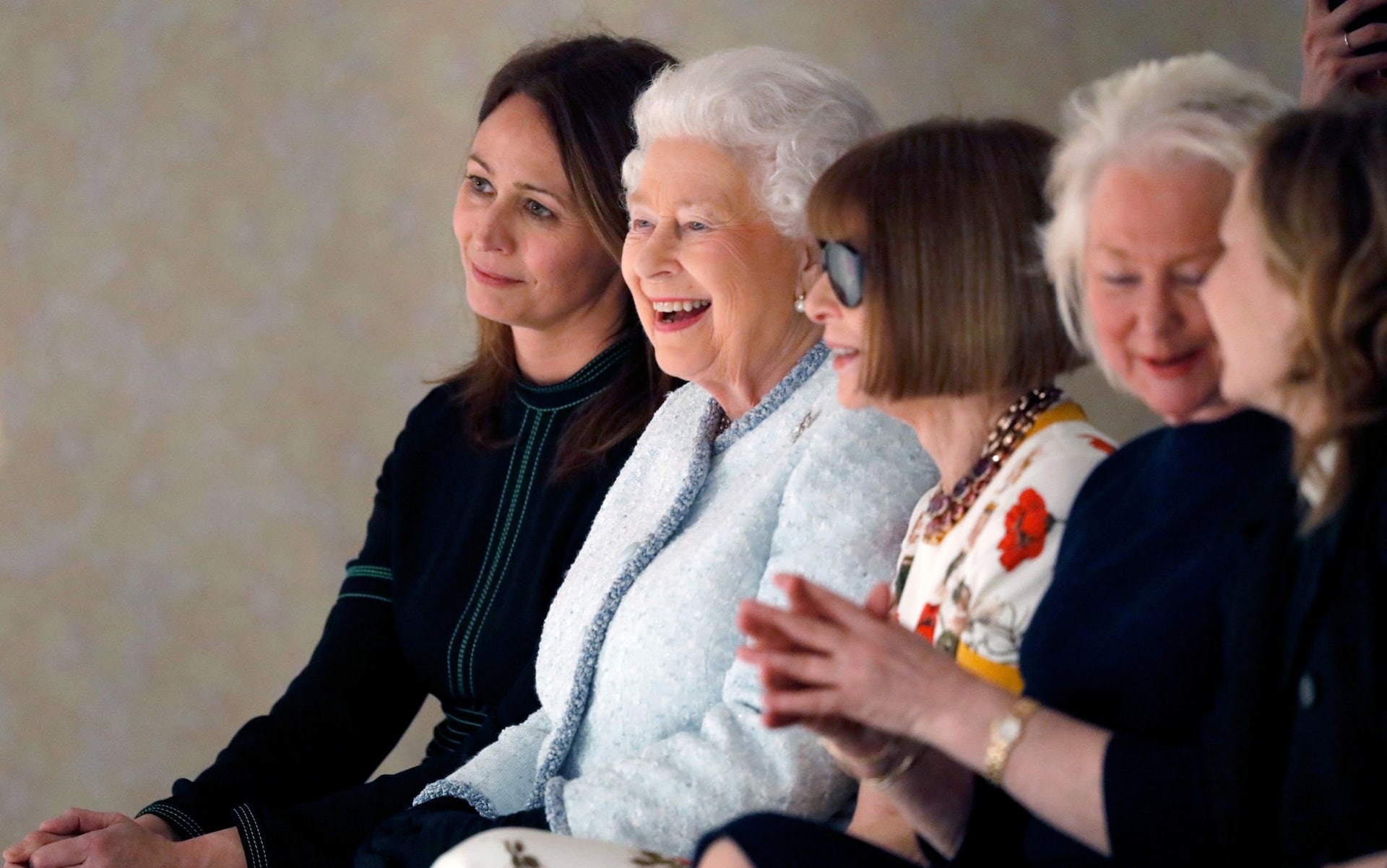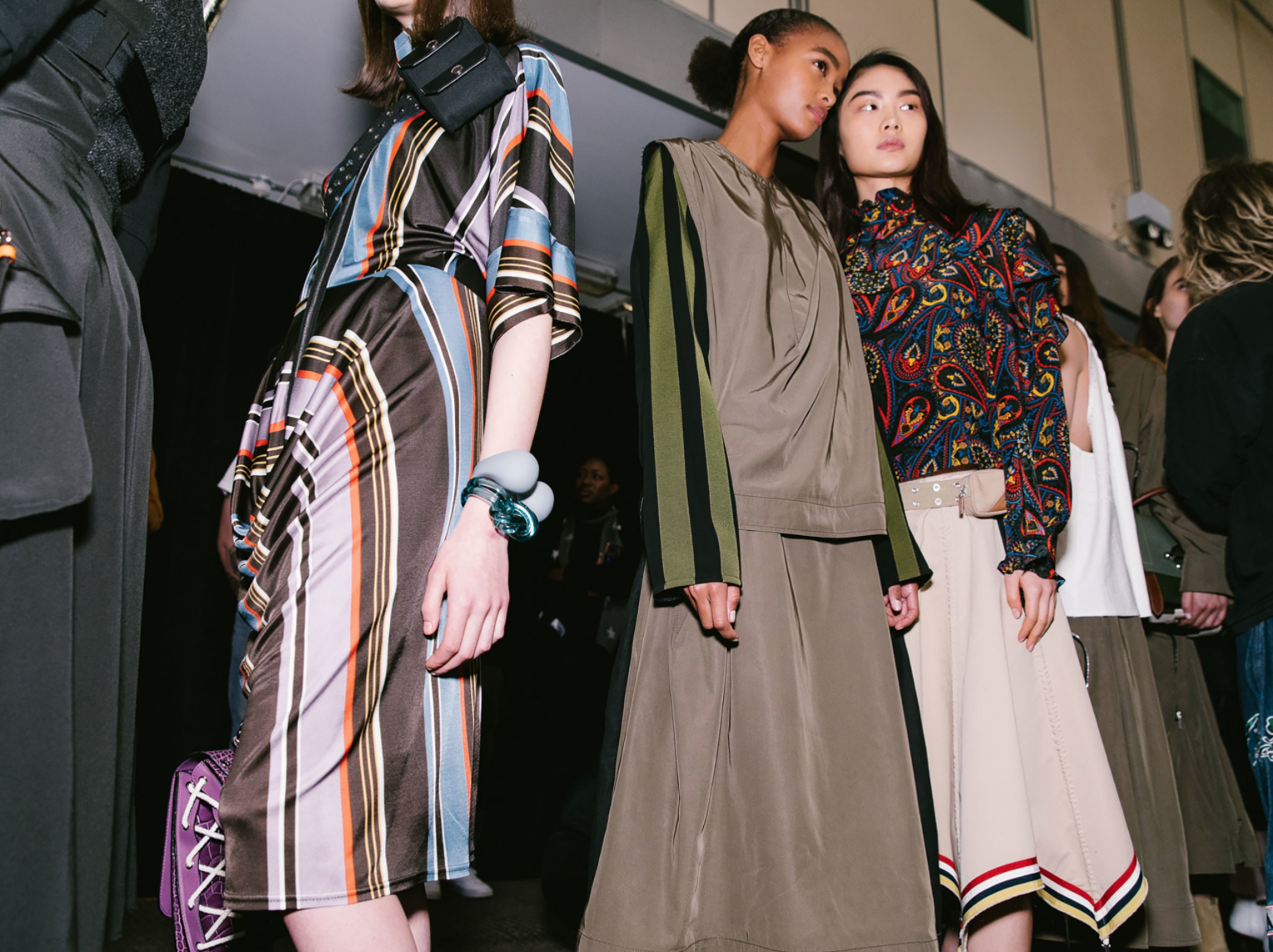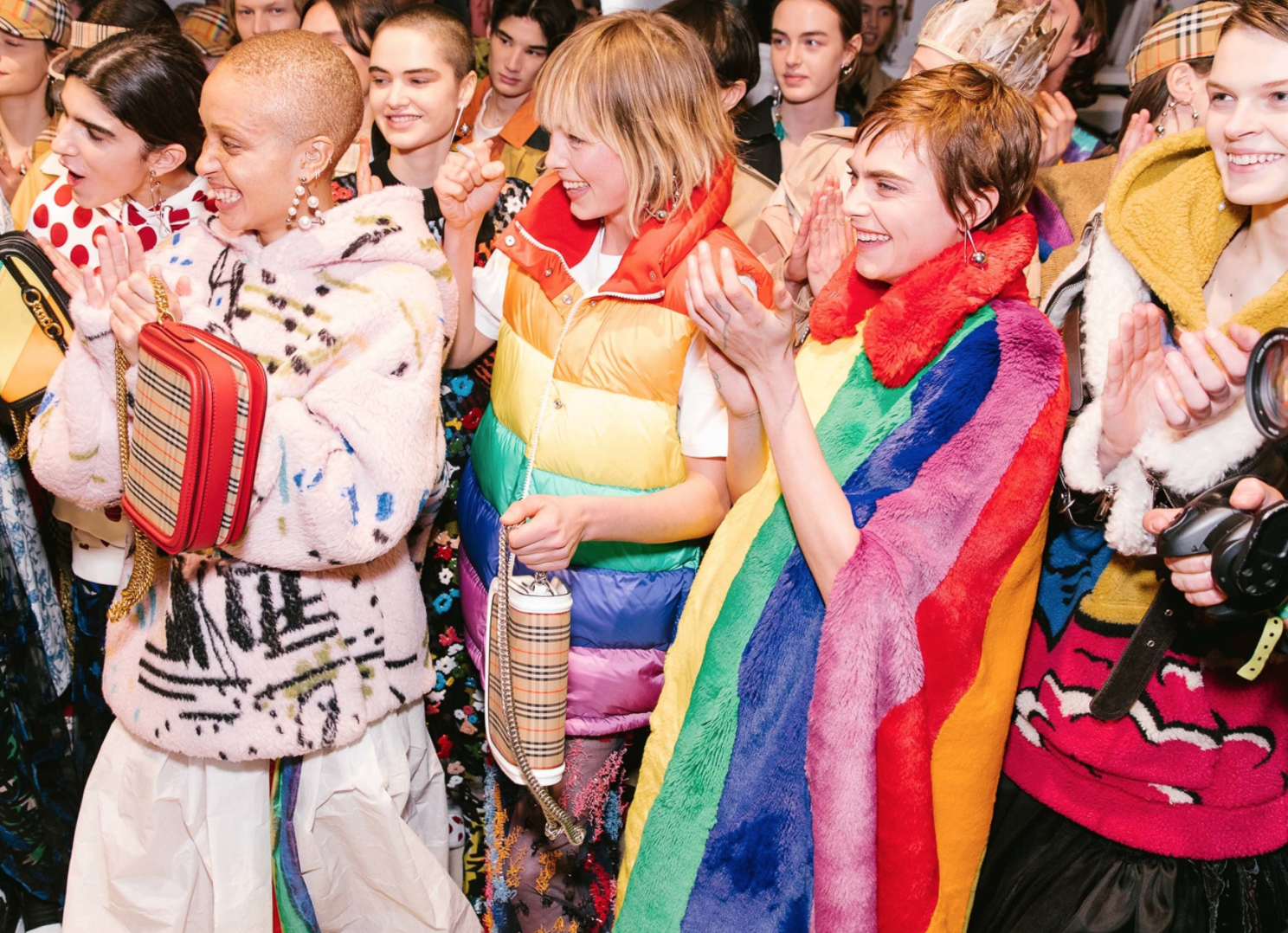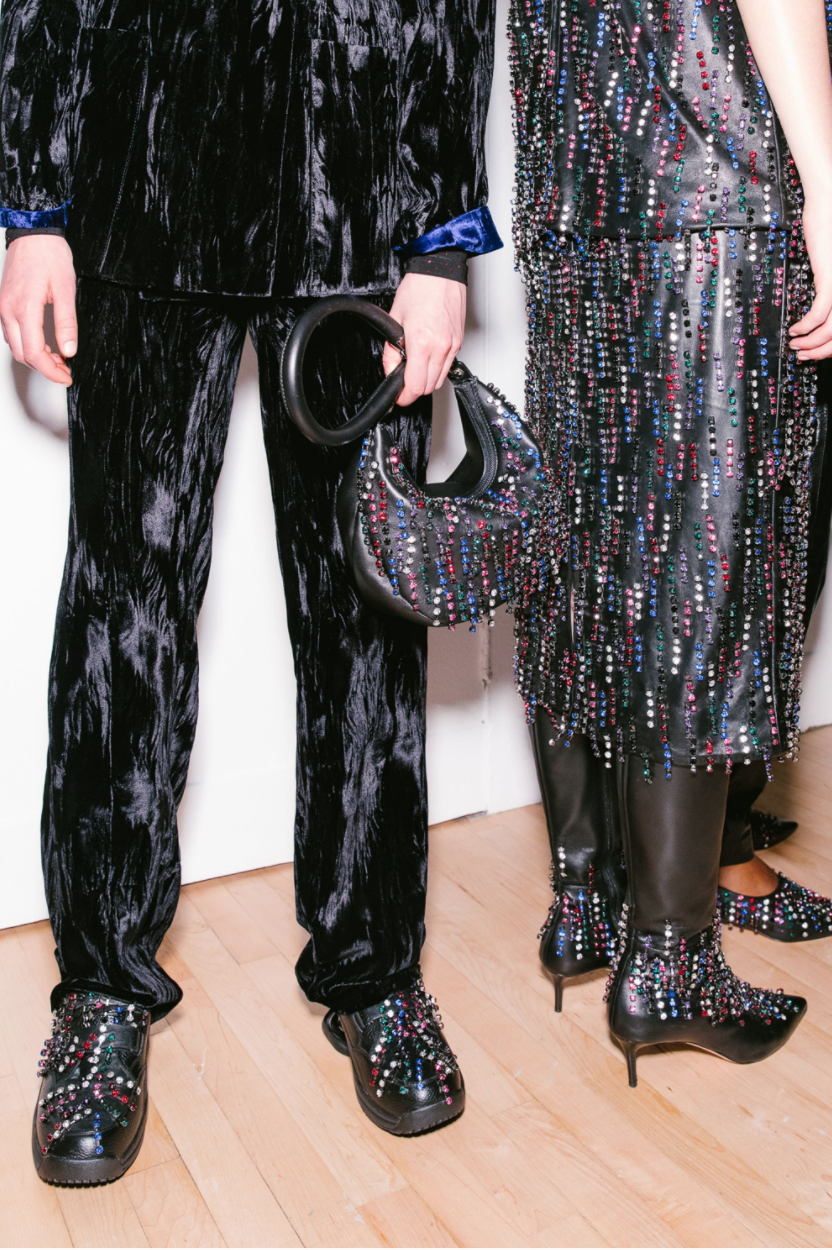London Fashion Week AW18

At the time of writing this article, the influence of this season’s Autumn 2018 London Fashion Week has already reached all corners of the world thanks to one unforgettable moment: HM the Queen Elizabeth II sitting front row at Richard Quinn- the immensely talented recent Central Saint Martin’s graduate. Her presence trended on Twitter and was splashed across global front pages, sending a powerful message of support to rising British creative talent.
The British fashion capital once looked down upon as a boisterous fun fair for wide-eyed fashion graduates, has matured into a leading force for desirable grown-up clothes; keeping its roots deep in experimentation yet adopting a wearable approach. Most clearly stressing this point was the particularly strong collection by York-based designer Matty Bovan, who evolved his offering from a studenty-DIY aesthetic to an increasingly polished and put together look.

The strength of London has eclipsed New York, due to US-based designers continuing to jump ship and cross the pond when showing collections, including Delpozo’s creative director Josep Font who chose to take his Madrid-based label to London this season. While London makes sense due to geographic location, it is this creative surge which is making London increasingly attractive. The city is experiencing a vibrant new design scene thanks to the dominance of savvy young graduates supported by initiatives like The British Fashion Council’s NEWGEN which provides recipients with regular mentoring and financial support. Together with the HM the Queen awarding NEWGEN recipient Richard Quinn with the first ever Queen Elizabeth II Award for British Design, the spotlight on Britain’s fashion future grows stronger, underscoring its role as the fashion incubator for fashion talent.

Without a doubt, the signature moment of the season included Christopher Bailey’s swan song for Burberry, ending his 17-year tenure as creative director. Instead of nostalgia and a roster of “greatest hits”, the collection was a touching celebration of his career. The collection, titled Time, explored the past, present, and future of Burberry through vintage references of “Burberry’s” stitched onto rainbow coloured athletic sweatshirts worn by rebellious sons and classic trenches worn by their conforming fathers. The infamous cheque has come and gone (and returned) under Bailey, celebrated today in full force as it was featured on bucket hats, shirts, trenches, and baseball caps. Also, with rainbows everywhere the eye could see, the collection symbolised gay pride and additionally provided large donations to various youth charities which support LGBTQ+ rights and mental health.
Other prominent moments during the week included the increasing involvement of embassies promoting their own local talent in the city. Embassies of Canada and Germany introduced guests to their rising stars, while Hong Kong staged an inspiring presentation inside the grand halls of Somerset House, proving why fashion is shifting from west to east - not only in terms of consumption. Also interesting to note is how the fashion show continues to evolve. This season saw an increase in a more democratic-style presentation, as well as incorporating digitalised formats such as Vivienne Westwood presenting her collection on Youtube. In the case of Steven Tai’s collection, the entire medium of fashion presentation broke ground. Tai who collaborated with the London College of Fashion, ilmxlab, and “Great for Imagination”, saw the historic Durbar Hall at the British Foreign Office digitally transform into the neon streets of Macau. The collection was shown live and on a gigantic screen through immersive augmented reality, and sparked food for thought on the future of the fashion show and indeed the future of fashion week.

The overwhelming look of the London collections focused on longer hems and high necklines, catering to the rise of modest fashion - a movement fuelled as much by religious inclusivity as this unique moment for women who are standing up to harassment. Save for a very convincing presentation by Christopher Kane who celebrated feminine sensuality, the majority of designers offered a look of less exposure, less flaunting. Whether it is fighting against harassment, fighting for equal pay, fighting for the safety of ourselves and our children, fighting for the preservation of the environment, women are headed to battle and need to be well prepared. The lack of high heels only enforced the desire of women to stay fully grounded (and well balanced) when striding ahead, recognising each charging step with unforgiving power.
Similar to New York, a main theme in London was also protection. In scary times who doesn’t want to cuddle up with multiple layers or a chic Roksanda blanket covering our shoulders. Other trends included a warm palate crowned by mustard yellow and shocking pink, lose draping, layered sheer, the free movement of fringe, ribbons and bows, and an orchestrated mix-match of complimenting patchwork. Intelligent. Empowering. Relentless.
This season was a triumph for London, radiating an energy which has not been felt in a while. Through preparation and bravery led by the superb work by the British Fashion Council, the creative capital is proactively bracing itself for the negative impact of Brexit ominously lingering in distance. London will not fall and has never faltered to a challenge - London Fashion Week made the case to the global creative community to “Believe in us” and “support us in the challenging times ahead”. I have never witnessed the global industry to be so united and I was left with optimism for London moving creatively forward.